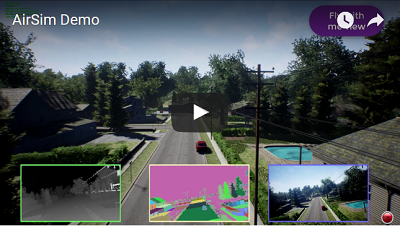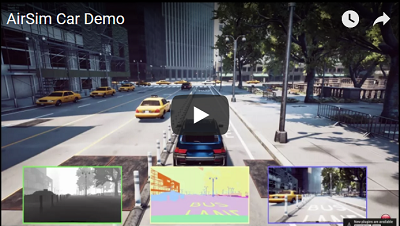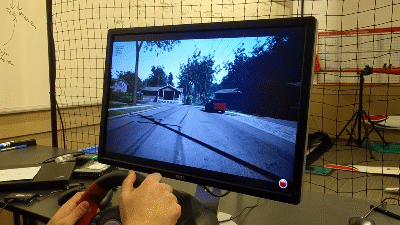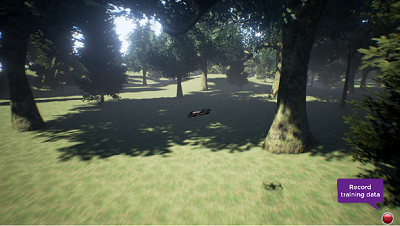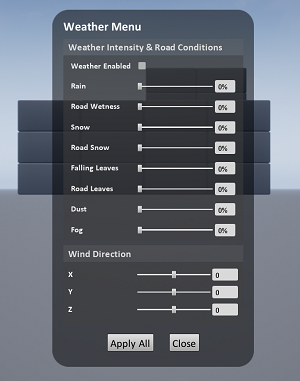Updated link directly to main Project AirSim page. |
||
|---|---|---|
| .github | ||
| AirLib | ||
| AirLibUnitTests | ||
| DroneServer | ||
| DroneShell | ||
| Examples | ||
| GazeboDrone | ||
| HelloCar | ||
| HelloDrone | ||
| HelloSpawnedDrones | ||
| LogViewer | ||
| MavLinkCom | ||
| PX4Scripts | ||
| PythonClient | ||
| SGM | ||
| Unity | ||
| Unreal | ||
| azure | ||
| cmake | ||
| docker | ||
| docs | ||
| pipelines | ||
| ros/src | ||
| ros2/src | ||
| tools | ||
| .clang-format | ||
| .clang-format-ignore | ||
| .gitignore | ||
| AUTHORS.md | ||
| AirSim.props | ||
| AirSim.sln | ||
| AirSim.sln.vlconfig | ||
| CHANGELOG.md | ||
| CONTRIBUTING.md | ||
| LICENSE | ||
| README.md | ||
| SECURITY.md | ||
| SUPPORT.md | ||
| UnrealPluginFiles.vcxproj | ||
| UnrealPluginFiles.vcxproj.filters | ||
| build.cmd | ||
| build.sh | ||
| build_docs.bat | ||
| build_docs.sh | ||
| check_cmake.bat | ||
| clean.cmd | ||
| clean.sh | ||
| clean_rebuild.bat | ||
| clean_rebuild.sh | ||
| install_run_all.sh | ||
| install_unreal.sh | ||
| mkdocs.yml | ||
| setup.sh | ||
README.md
AirSim announcement: This repository will be archived in the coming year
In 2017 Microsoft Research created AirSim as a simulation platform for AI research and experimentation. Over the span of five years, this research project has served its purpose—and gained a lot of ground—as a common way to share research code and test new ideas around aerial AI development and simulation. Additionally, time has yielded advancements in the way we apply technology to the real world, particularly through aerial mobility and autonomous systems. For example, drone delivery is no longer a sci-fi storyline—it’s a business reality, which means there are new needs to be met. We’ve learned a lot in the process, and we want to thank this community for your engagement along the way.
In the spirit of forward momentum, we will be releasing a new simulation platform in the coming year and subsequently archiving the original 2017 AirSim. Users will still have access to the original AirSim code beyond that point, but no further updates will be made, effective immediately. Instead, we will focus our efforts on a new product, Microsoft Project AirSim, to meet the growing needs of the aerospace industry. Project AirSim will provide an end-to-end platform for safely developing and testing aerial autonomy through simulation. Users will benefit from the safety, code review, testing, advanced simulation, and AI capabilities that are uniquely available in a commercial product. As we get closer to the release of Project AirSim, there will be learning tools and features available to help you migrate to the new platform and to guide you through the product. To learn more about building aerial autonomy with the new Project AirSim, visit https://aka.ms/projectairsim.
Welcome to AirSim
AirSim is a simulator for drones, cars and more, built on Unreal Engine (we now also have an experimental Unity release). It is open-source, cross platform, and supports software-in-the-loop simulation with popular flight controllers such as PX4 & ArduPilot and hardware-in-loop with PX4 for physically and visually realistic simulations. It is developed as an Unreal plugin that can simply be dropped into any Unreal environment. Similarly, we have an experimental release for a Unity plugin.
Our goal is to develop AirSim as a platform for AI research to experiment with deep learning, computer vision and reinforcement learning algorithms for autonomous vehicles. For this purpose, AirSim also exposes APIs to retrieve data and control vehicles in a platform independent way.
Check out the quick 1.5 minute demo
Drones in AirSim
Cars in AirSim
How to Get It
Windows
Linux
macOS
For more details, see the use precompiled binaries document.
How to Use It
Documentation
View our detailed documentation on all aspects of AirSim.
Manual drive
If you have remote control (RC) as shown below, you can manually control the drone in the simulator. For cars, you can use arrow keys to drive manually.
Programmatic control
AirSim exposes APIs so you can interact with the vehicle in the simulation programmatically. You can use these APIs to retrieve images, get state, control the vehicle and so on. The APIs are exposed through the RPC, and are accessible via a variety of languages, including C++, Python, C# and Java.
These APIs are also available as part of a separate, independent cross-platform library, so you can deploy them on a companion computer on your vehicle. This way you can write and test your code in the simulator, and later execute it on the real vehicles. Transfer learning and related research is one of our focus areas.
Note that you can use SimMode setting to specify the default vehicle or the new ComputerVision mode so you don't get prompted each time you start AirSim.
Gathering training data
There are two ways you can generate training data from AirSim for deep learning. The easiest way is to simply press the record button in the lower right corner. This will start writing pose and images for each frame. The data logging code is pretty simple and you can modify it to your heart's content.
A better way to generate training data exactly the way you want is by accessing the APIs. This allows you to be in full control of how, what, where and when you want to log data.
Computer Vision mode
Yet another way to use AirSim is the so-called "Computer Vision" mode. In this mode, you don't have vehicles or physics. You can use the keyboard to move around the scene, or use APIs to position available cameras in any arbitrary pose, and collect images such as depth, disparity, surface normals or object segmentation.
Weather Effects
Press F10 to see various options available for weather effects. You can also control the weather using APIs. Press F1 to see other options available.
Tutorials
- Video - Setting up AirSim with Pixhawk Tutorial by Chris Lovett
- Video - Using AirSim with Pixhawk Tutorial by Chris Lovett
- Video - Using off-the-self environments with AirSim by Jim Piavis
- Webinar - Harnessing high-fidelity simulation for autonomous systems by Sai Vemprala
- Reinforcement Learning with AirSim by Ashish Kapoor
- The Autonomous Driving Cookbook by Microsoft Deep Learning and Robotics Garage Chapter
- Using TensorFlow for simple collision avoidance by Simon Levy and WLU team
Participate
Paper
More technical details are available in AirSim paper (FSR 2017 Conference). Please cite this as:
@inproceedings{airsim2017fsr,
author = {Shital Shah and Debadeepta Dey and Chris Lovett and Ashish Kapoor},
title = {AirSim: High-Fidelity Visual and Physical Simulation for Autonomous Vehicles},
year = {2017},
booktitle = {Field and Service Robotics},
eprint = {arXiv:1705.05065},
url = {https://arxiv.org/abs/1705.05065}
}
Contribute
Please take a look at open issues if you are looking for areas to contribute to.
Who is Using AirSim?
We are maintaining a list of a few projects, people and groups that we are aware of. If you would like to be featured in this list please make a request here.
Contact
Join our GitHub Discussions group to stay up to date or ask any questions.
We also have an AirSim group on Facebook.
What's New
- Cinematographic Camera
- ROS2 wrapper
- API to list all assets
- movetoGPS API
- Optical flow camera
- simSetKinematics API
- Dynamically set object textures from existing UE material or texture PNG
- Ability to spawn/destroy lights and control light parameters
- Support for multiple drones in Unity
- Control manual camera speed through the keyboard
For complete list of changes, view our Changelog
FAQ
If you run into problems, check the FAQ and feel free to post issues in the AirSim repository.
Code of Conduct
This project has adopted the Microsoft Open Source Code of Conduct. For more information see the Code of Conduct FAQ or contact opencode@microsoft.com with any additional questions or comments.
License
This project is released under the MIT License. Please review the License file for more details.
